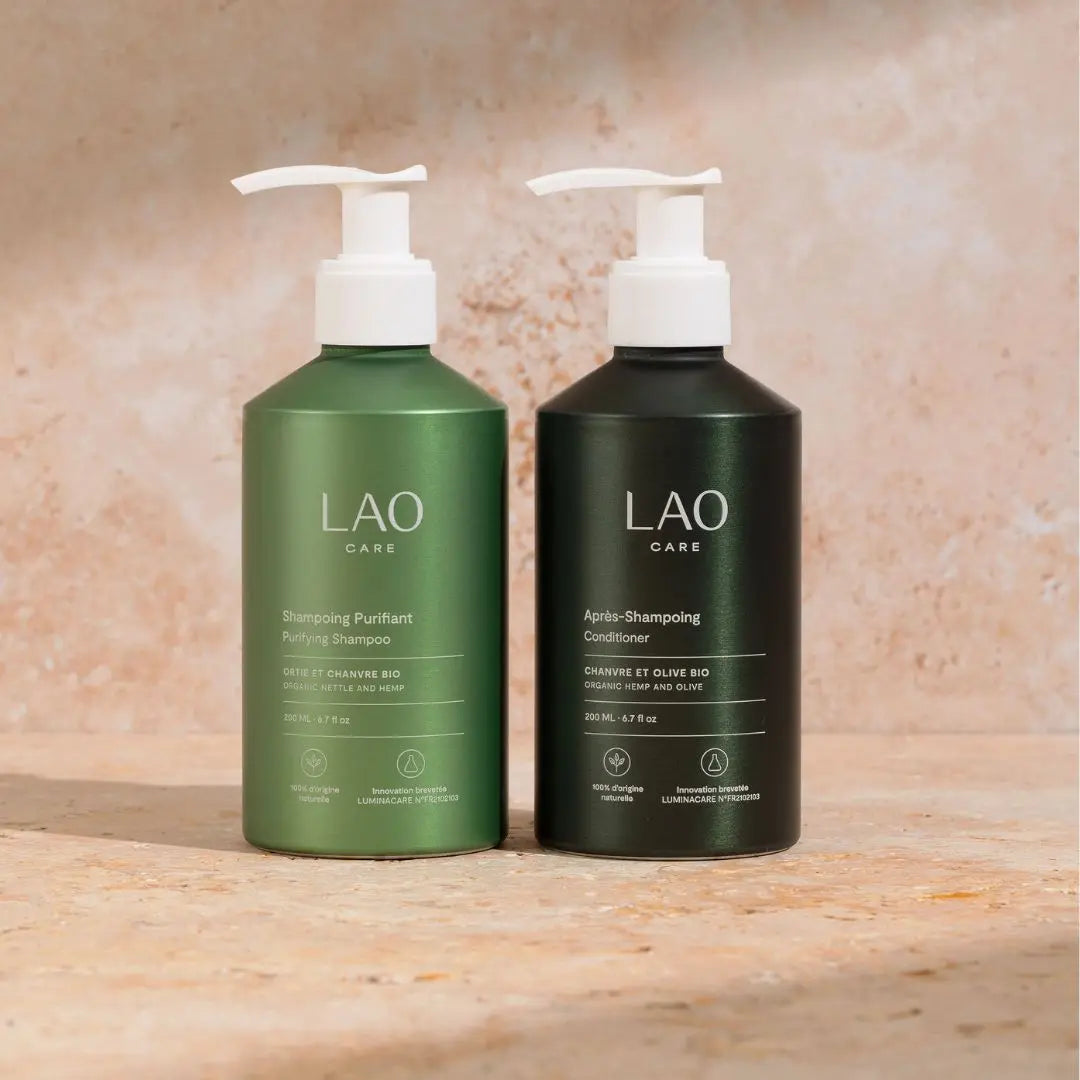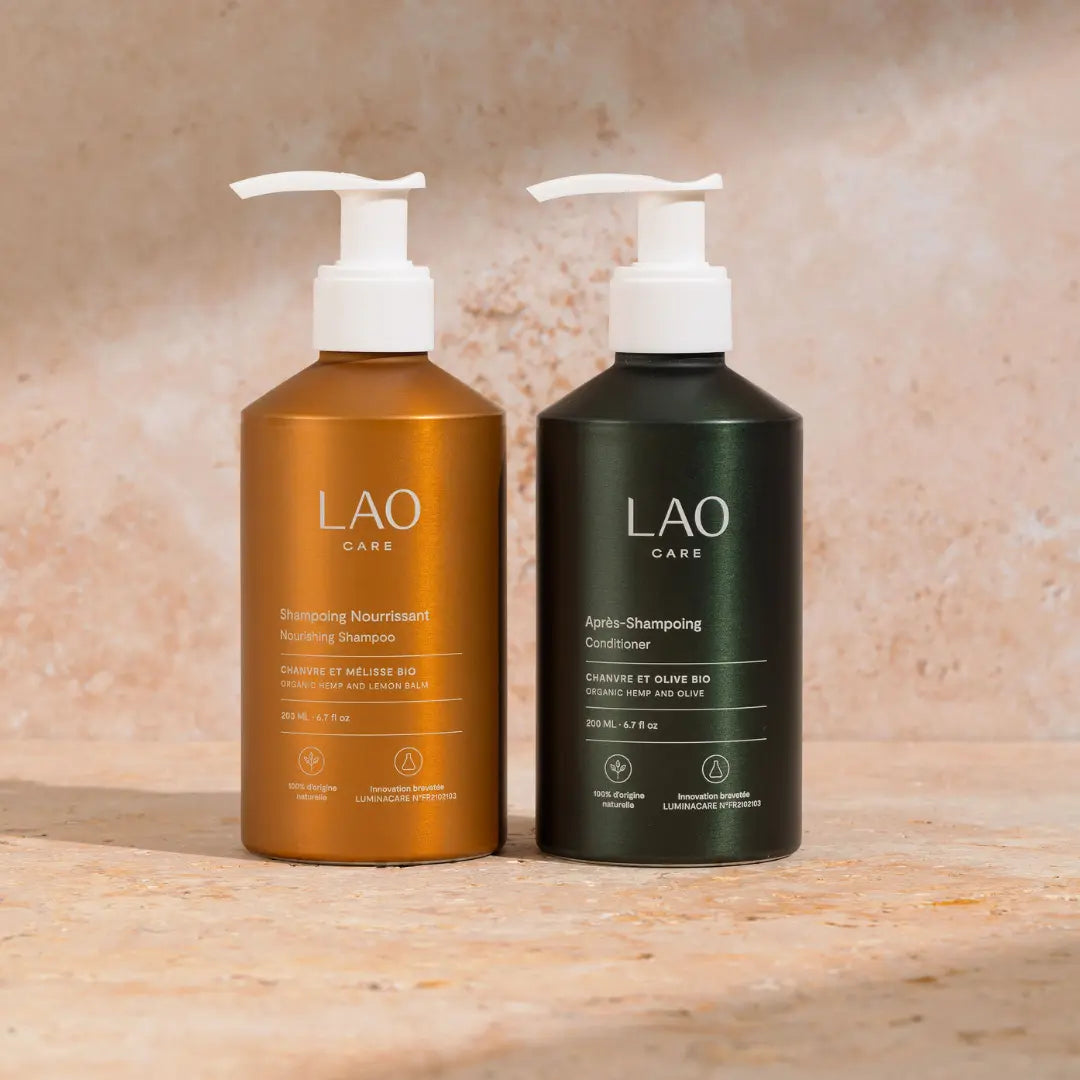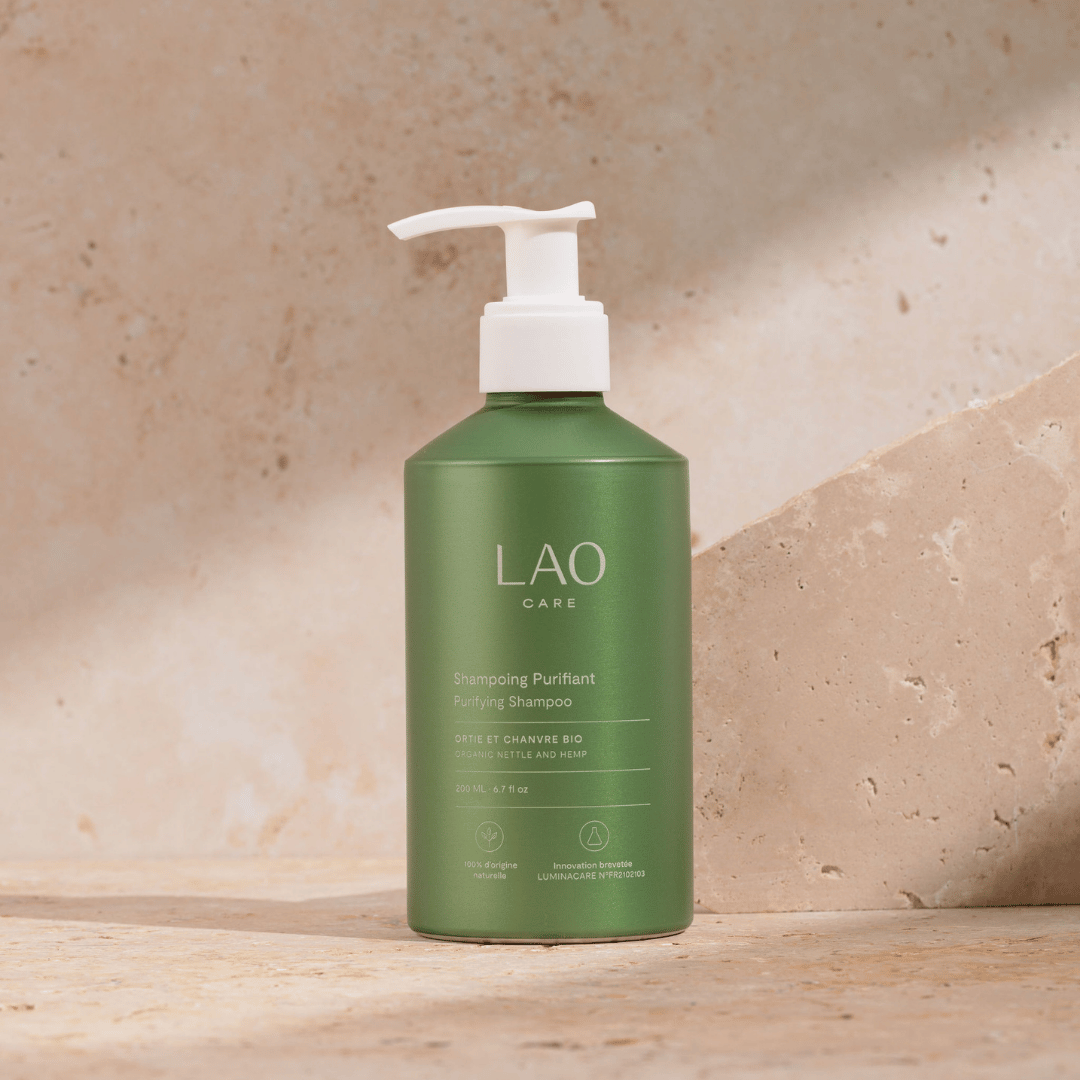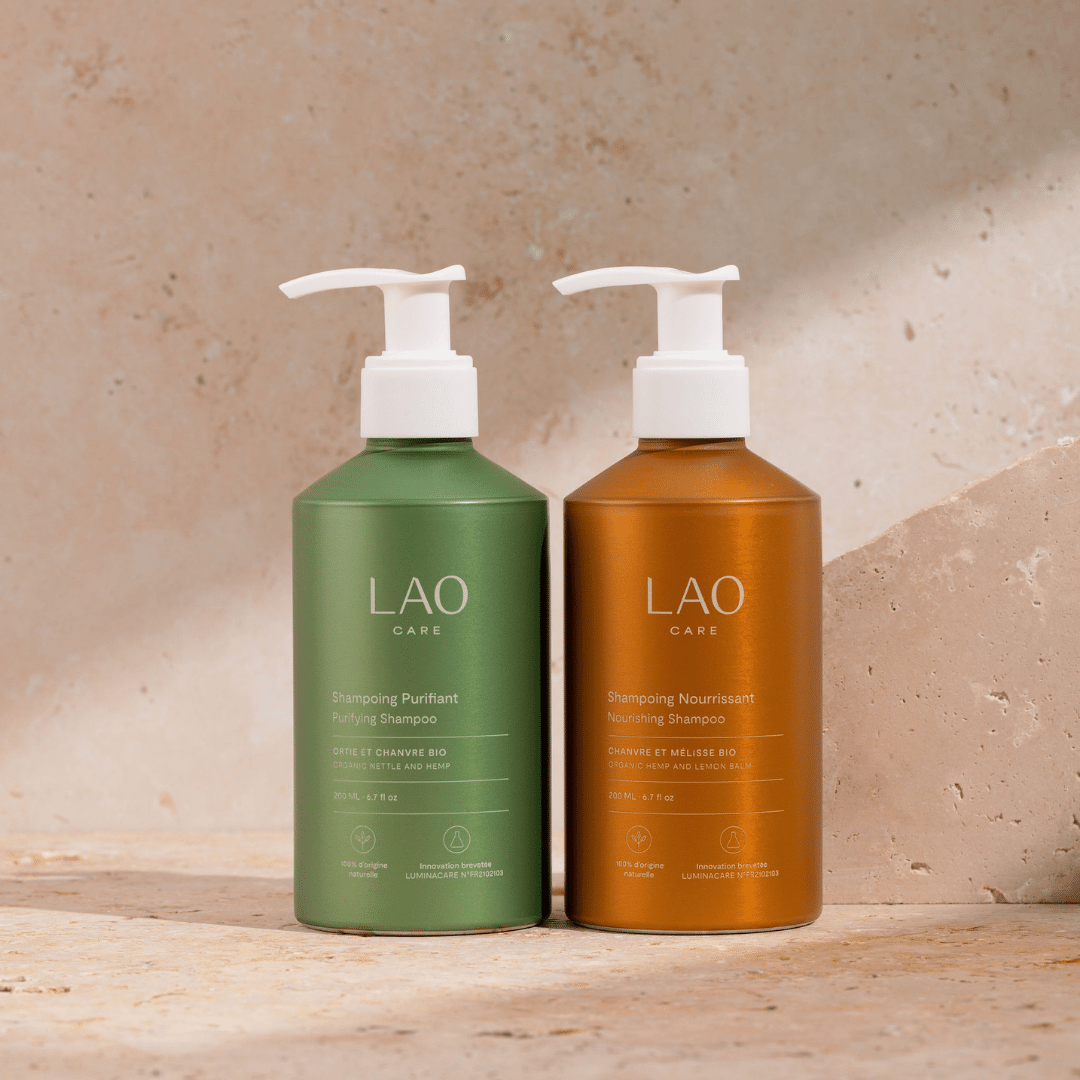Christmas is coming, and with it, the cold, the snow, the hot chocolates and Mariah Carey, New Year's Eve and its family reunions. At LAO we wanted to give you a helping hand to shine as bright as the tree, certainly around the petits fours. So, we went back in time to understand how our ancestors washed their hair , and wrote this little article just for you.
Etymological origin first, the English word "shampoo" dates from the 18th century and is derived from the indi "champna", a plant whose flowers are pressed to make naturally scented oils used to massage the hair .
History of shampoo
Hair washing first appeared in ancient times , when it was customary to clean the scalp using clays, herbal decoctions or henna. Plants containing saponin were favored, among other things.
It is also possible to use soap , invented at the same time. However, the latter turns out to be too irritating for the eyes and the scalp (this has not really changed, see our article on the subject ).
Then, in the Middle Ages, to wash their long hair , women used ointments made from animal fats, herbal infusions, but also egg white mixed with ash. Iris root powder is used as a dry shampoo .
During the Renaissance, blond and red hair were fashionable , and women used sometimes dangerous recipes (bleach, of course) to try to lighten their hair.
When it comes to washing, Catherine de Medici shares her beauty and hair experiences in a book entitled “ The Book of Experiences ”.
The well-known Nostradamus also shares hair care recipes in his Treatise on Jams, but these are more related to heavy chemistry than cosmetics.
But moving forward in time, at the end of the 16th century, the water quality deteriorated and it promoted the transmission of deadly diseases. It was then recommended not to use it for body care. A replacement similar to today's dry shampoo was then found: clay powder to degrease the roots.
Modern shampoo
In the mid- 18th century, Sake Dean Mohammed opened Indian Steam Baths in Brighton, England, where customers enjoyed scalp massages with vegetable oils . This marked the beginning of the history of shampoo as we know it today.
After the democratization of this treatment, hairdressers then used a paste created by Kesey Herbert: “Shaempoo” mixing soap flakes and plants to clean the hair and scalp .
In the 19th century, women only washed their hair a few times a year , as the products used too often would give them migraines.
It was only at the very beginning of the 20th century that dedicated shampoos (which foam) appeared.
Shampoo as we know it
Since the end of the 20th century, shampoos have evolved and are no longer just for washing. In fact, a shampoo can also provide a dose of care and protection for the hair .
The ranges are expanding and adapting to each type of hair and the different needs of consumers.
Although the majority of shampoos have been made up of chemicals since the 2000s, the trend has been reversing in recent years and we have seen a return to the past with a quest for naturalness in hair care.
We hope that this article on the history of shampoo has taught you something, and that you now have an extra story to tell your loved ones!
To shine with science (simplified!) you can also consult our article which explains how the pH of cosmetics influences the beauty and health of hair !
And to treat your loved ones this Christmas, why not give them a LAO gift card with no expiration date?
Sources:
- Who invented shampoo?, Madmoizelle https://www.madmoizelle.com/histoire-beaute-shampoing-209283
- Shampoo , Wikipedia https://fr.wikipedia.org/wiki/Shampoo






1 comment
J’apprécie beaucoup cette article et merci de cette découverte, c’est super intéressant :)
Merci beaucoup !!
Leave a comment